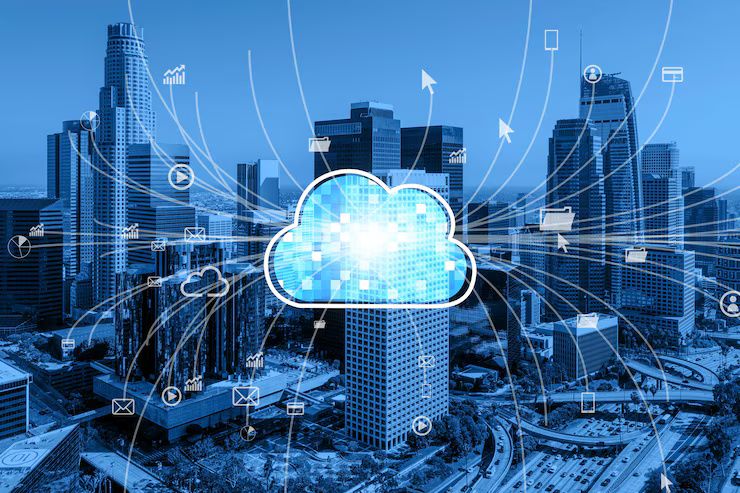Cloud Security Monitoring: Key Concepts, Tools, and Trends
Cloud security monitoring is the continuous process of observing cloud environments to detect threats, misconfigurations, unauthorized access, and compliance violations. It involves collecting and analyzing logs, tracking identity activities, monitoring configurations, and generating alerts in real-time
Cloud environments are now a central part of IT infrastructure for businesses of all sizes. With this shift, the risk landscape has evolved significantly. Cloud security monitoring plays a vital role for several reasons:

-
Growing Cyber Threats:
Attackers often target cloud storage misconfigurations, vulnerable APIs, and identity credentials to gain access to systems. -
Wide Impact Across Roles:
-
IT and security teams use monitoring tools to detect and respond to incidents.
-
Developers need visibility to maintain secure deployments.
-
Compliance teams rely on monitoring logs to pass audits and meet legal requirements.
-
Business leaders count on cloud security to prevent breaches that could impact brand reputation.
-
-
Common Challenges Solved:
-
Detecting misconfigured services and storage
-
Monitoring for unauthorized access or abnormal user behavior
-
Ensuring audit readiness for frameworks like GDPR, HIPAA, or ISO
-
Reducing downtime and data loss from breaches
-
Cloud security monitoring is essential for protecting digital assets and maintaining trust with customers and regulators.
Recent Updates – Trends and developments in the past year
1. AI and Machine Learning Integration:
Monitoring tools are increasingly using artificial intelligence to identify patterns, reduce false positives, and prioritize alerts based on real-time threat analysis.
2. Growth of Cloud-Native SIEMs:
Cloud-native security information and event management (SIEM) tools have seen rapid adoption. These tools collect data from cloud platforms and services, enabling faster detection and response.
3. Zero Trust Security Models:
More organizations are implementing Zero Trust principles, which rely heavily on continuous monitoring of identity, device, and access behavior.
4. Focus on Container and Serverless Security:
Monitoring tools now include visibility into Kubernetes environments, containers, and serverless applications, which are common in modern DevOps workflows.
5. Alert Volume Increase:
With better tools and broader visibility, organizations are seeing a significant rise in daily cloud alerts. This requires improved alert filtering and response strategies.
Laws or Policies – Regulations affecting cloud monitoring
Cloud security monitoring is influenced by various national and international laws. These include:
United States
-
FISMA and FedRAMP: Government systems must be continuously monitored and meet federal security standards.
-
CCPA: Organizations must implement reasonable security practices, making monitoring essential.
European Union
-
GDPR: Requires prompt breach detection and notification (within 72 hours), which is only possible with active monitoring.
-
NIS2 Directive: Introduced stronger cybersecurity requirements for critical service providers, effective since 2024.
India
-
Digital Personal Data Protection Act: Organizations must take reasonable measures to protect personal data, including monitoring.
-
CERT-In Guidelines: Require continuous logging and real-time detection for critical infrastructure providers.
Global Standards
-
ISO/IEC 27001: Specifies that organizations must log and monitor events relevant to information security.
-
SOC 2 Type II: Requires documentation and evidence of ongoing monitoring and incident response.
Monitoring helps organizations meet compliance requirements, prepare for audits, and avoid penalties.
Tools and Resources – Platforms and utilities for monitoring
Log Management and SIEM Tools
-
Splunk Cloud – Scalable log collection and analytics
-
Elastic (ELK Stack) – Open-source log monitoring with visualization
-
Sumo Logic – Cloud-native SIEM with dashboards and alerts
Cloud Provider Tools
-
AWS: GuardDuty, CloudTrail, Security Hub
-
Microsoft Azure: Sentinel, Azure Monitor, Defender for Cloud
-
Google Cloud Platform: Security Command Center, Chronicle
Container and Serverless Monitoring
-
Sysdig Secure – Container runtime and policy enforcement
-
Trivy – Vulnerability scanner for containers and Kubernetes
-
Aqua Security – Serverless and container security solutions
Cloud Posture Management
-
Prisma Cloud – Visibility and compliance for multi-cloud environments
-
Lacework – Behavioral analytics for workloads and containers
-
Orca Security – Agentless scanning and posture management
Open-Source Tools
-
Falco – Real-time threat detection for containers
-
Zeek – Network traffic analysis tool
-
Prowler – AWS configuration auditing and compliance checks
Compliance Templates and Checklists
-
GDPR breach notification templates
-
ISO/IEC 27001 logging frameworks
-
NIST logging implementation guides
-
AWS Trusted Advisor and Azure Security Score reports
These tools help identify vulnerabilities, audit system changes, enforce policies, and detect threats before they escalate.
FAQs – Common questions about cloud security monitoring
What’s the difference between traditional and cloud monitoring?
Traditional monitoring focuses on physical servers and on-premises networks. Cloud monitoring includes identity access logs, virtual workloads, and distributed services across multiple regions and platforms.
Is cloud monitoring expensive?
Costs vary based on data volume, features, and provider. Most tools offer flexible pricing models suitable for startups to large enterprises. Basic monitoring can be achieved with native cloud tools at minimal cost.
How quickly can cloud threats be detected?
Advanced monitoring tools can detect issues within minutes using AI and automation. Manual setups or poorly configured tools may take hours or days.
What are the most critical things to monitor?
Identity and access changes, resource misconfigurations, traffic anomalies, and API activity are among the most important to monitor.
Can cloud monitoring help with compliance?
Yes. Many regulations require continuous monitoring and log retention. Monitoring tools also help prepare reports and alerts for audits.
Cloud Security Monitoring Layers and Tools
| Monitoring Area | What It Tracks | Examples |
|---|---|---|
| Identity & Access | Logins, permission changes | CloudTrail, Azure AD Logs, IAM logs |
| Infrastructure & Network | Flow logs, firewall rules, DNS requests | VPC Flow Logs, Zeek, GuardDuty |
| Host & Workload | Malware, patches, system configs | SentinelOne, Defender for Endpoint |
| Containers & Serverless | Image scans, runtime behavior | Trivy, Sysdig, Aqua Security |
| Compliance & Configuration | Drift, misconfigurations, policy checks | Prisma Cloud, AWS Config, Azure Policy |
Final Thoughts
Cloud security monitoring is no longer optional—it's a necessity in today’s complex and evolving IT environments. From regulatory compliance to threat detection and system health, the right monitoring strategy empowers businesses to operate securely in the cloud.
